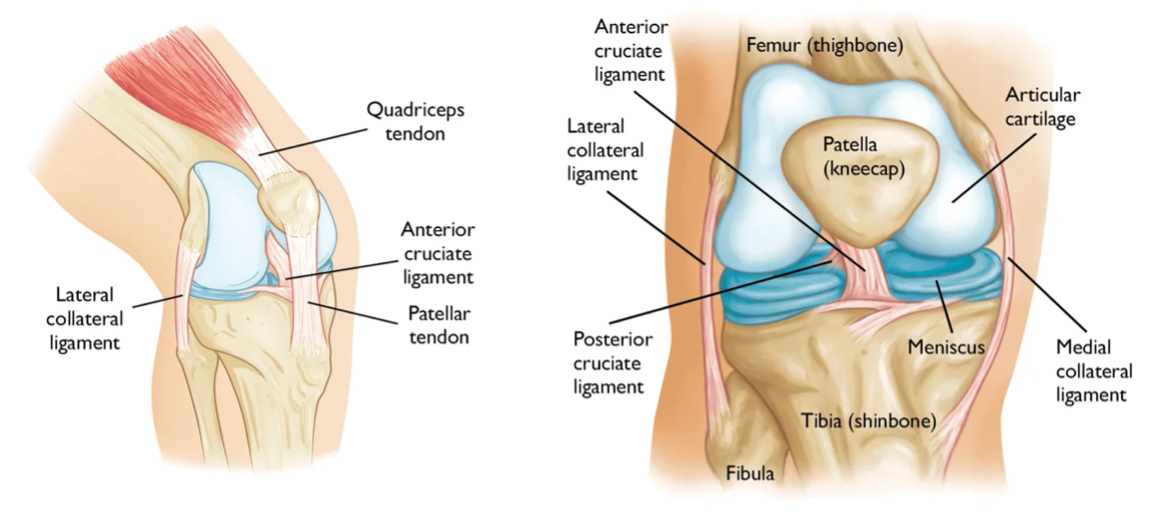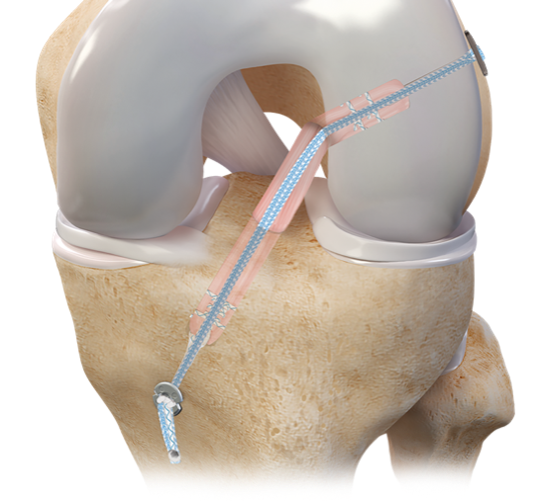ACL Surgery
Austin Cole, MD, treats various ligament injuries around the knee. ACL reconstruction is one of the most common procedures in his practice. He is trained in the most up-to-date techniques for ACL surgery and other ligament injuries.
Background of ACL Tears
ACL injuries typically occur through contact or pivoting movements. The ACL is arguably the most important ligament of the knee, and tears leave the knee vulnerable to instability, which can cause persistent pain, a sensation of the knee giving way, difficulty with daily activities, and increased risk of further damage. Studies show a significant increase in meniscus and cartilage injury if an ACL tear is left untreated. As a result, patient activity level and symptoms, rather than age, are now key factors in determining the need for surgery.
Once torn, the ACL is typically too damaged for successful repair. Although early attempts at repair had high failure rates, newer techniques using biologics and specialized methods are being studied. However, these lack long-term data and are not widely adopted. For young, active individuals, the standard remains reconstruction.
ACL reconstruction involves creating a new ligament using replacement tissue. Options include the quadriceps tendon, patellar tendon, hamstring tendon, and allograft, with the choice tailored to the patient. Dr. Cole performs all options but often uses the modern all-inside quadriceps tendon autograft with internal brace augmentation and tensional button fixation. He also performs ACL revision and other complex reconstructions.

Surgical Procedure
ACL surgery restores knee stability and supports return to full activity. It is performed arthroscopically using a few small incisions. Tunnels are drilled into the tibia and femur to secure the graft, which is threaded through and fixed with buttons, sutures, or screws, typically left in place permanently.
Depending on the injury, other procedures may also be needed, including treatment of meniscus tears, cartilage injuries, or other ligament damage.

Postoperative Recovery
Rehabilitation varies based on the type of reconstruction and any additional procedures performed. Initially, therapy is supervised by a physical therapist, starting two to three times per week and tapering to once or twice weekly. Home exercises are performed on non-therapy days.
Rehabilitation has three phases:
- Phase One focuses on controlling pain and swelling, regaining motion, and building early strength. A brace is worn immediately after surgery. Weight-bearing begins with crutches and progresses to full weight as tolerated.
- Phase Two emphasizes full motion and muscle strength recovery, including cycling, bodyweight exercises, and light jogging.
- Phase Three supports returning to full activity, building strength, and incorporating sport-specific exercises.
Normal strength and coordination are essential for a return to activity. Following current literature, athletes undergo return-to-sport testing at approximately 3.5 to 4 months and again at 6 months post-op. A brace may be recommended for an early return to cutting or pivoting sports.
Click here to download ACL Information.
Click here to download Prehab Information.
Click here to download Return to Sport Information.
